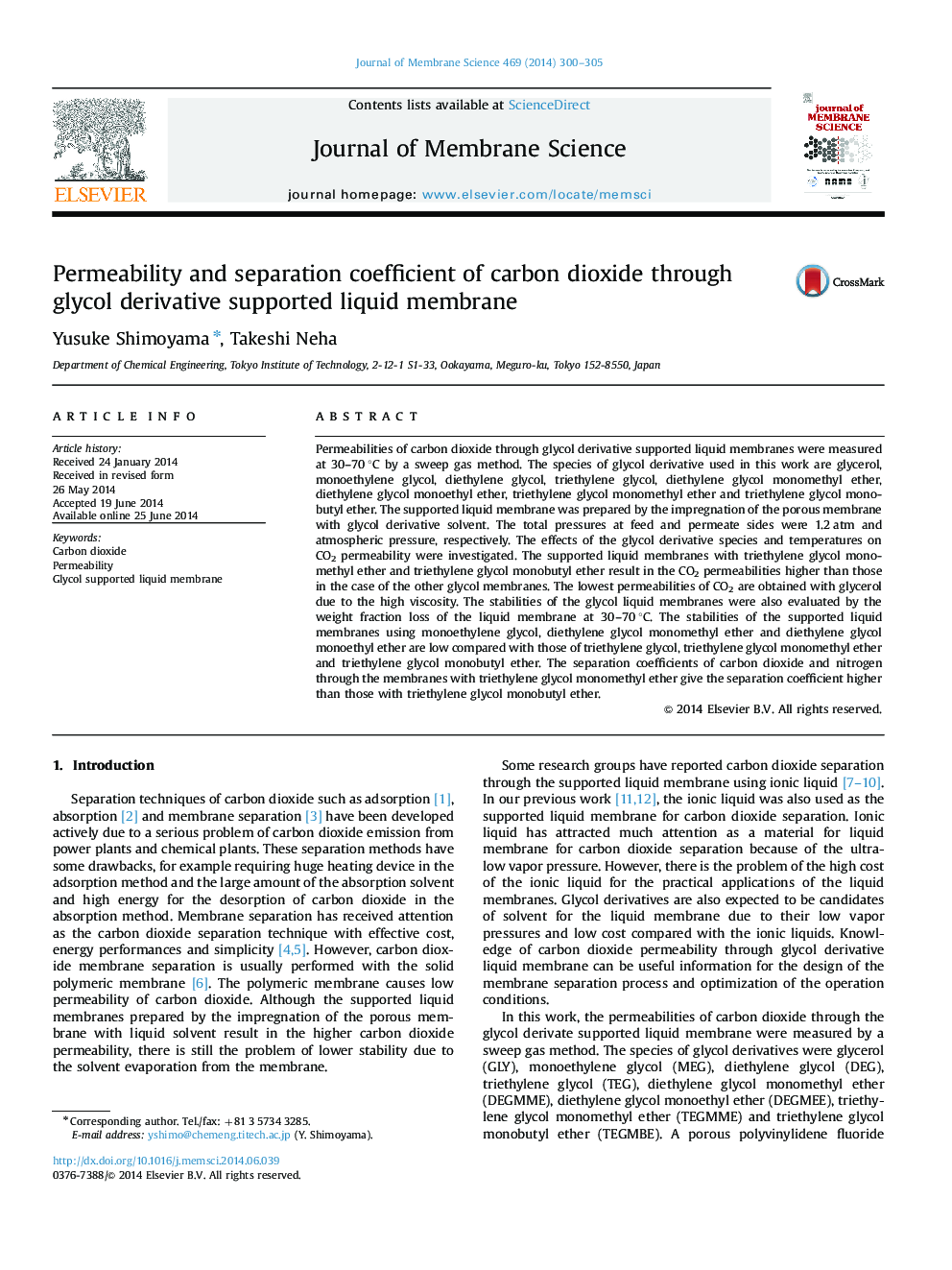| Article ID | Journal | Published Year | Pages | File Type |
|---|---|---|---|---|
| 633505 | Journal of Membrane Science | 2014 | 6 Pages |
•Carbon dioxide permeability through glycol ether membrane is higher than with glycol membrane.•Supported liquid membranes of TEGMME and TEGMBE give the carbon dioxide permeability higher than [bmim][Tf2N] ionic liquid.•Single carbon dioxide permeability through glycol supported liquid membrane is higher than that in the case of binary mixed gas.
Permeabilities of carbon dioxide through glycol derivative supported liquid membranes were measured at 30–70 °C by a sweep gas method. The species of glycol derivative used in this work are glycerol, monoethylene glycol, diethylene glycol, triethylene glycol, diethylene glycol monomethyl ether, diethylene glycol monoethyl ether, triethylene glycol monomethyl ether and triethylene glycol monobutyl ether. The supported liquid membrane was prepared by the impregnation of the porous membrane with glycol derivative solvent. The total pressures at feed and permeate sides were 1.2 atm and atmospheric pressure, respectively. The effects of the glycol derivative species and temperatures on CO2 permeability were investigated. The supported liquid membranes with triethylene glycol monomethyl ether and triethylene glycol monobutyl ether result in the CO2 permeabilities higher than those in the case of the other glycol membranes. The lowest permeabilities of CO2 are obtained with glycerol due to the high viscosity. The stabilities of the glycol liquid membranes were also evaluated by the weight fraction loss of the liquid membrane at 30–70 °C. The stabilities of the supported liquid membranes using monoethylene glycol, diethylene glycol monomethyl ether and diethylene glycol monoethyl ether are low compared with those of triethylene glycol, triethylene glycol monomethyl ether and triethylene glycol monobutyl ether. The separation coefficients of carbon dioxide and nitrogen through the membranes with triethylene glycol monomethyl ether give the separation coefficient higher than those with triethylene glycol monobutyl ether.
